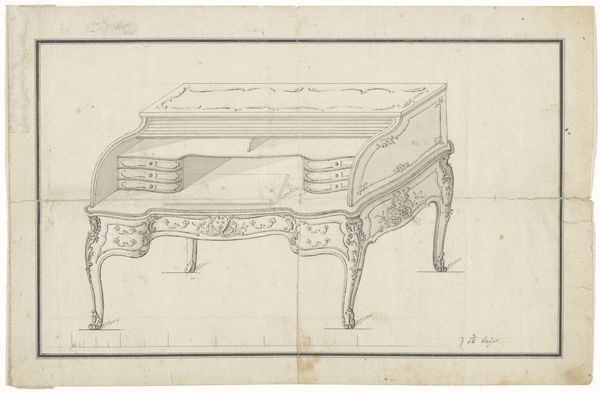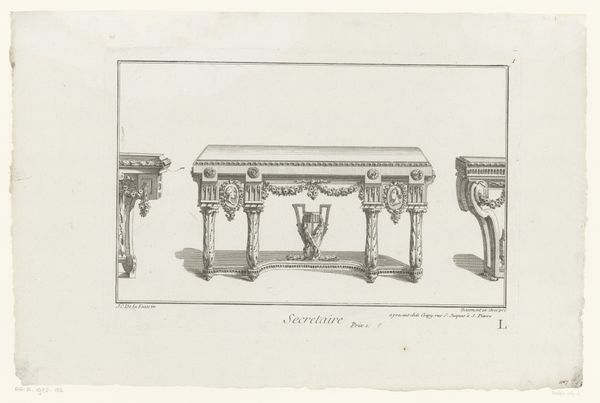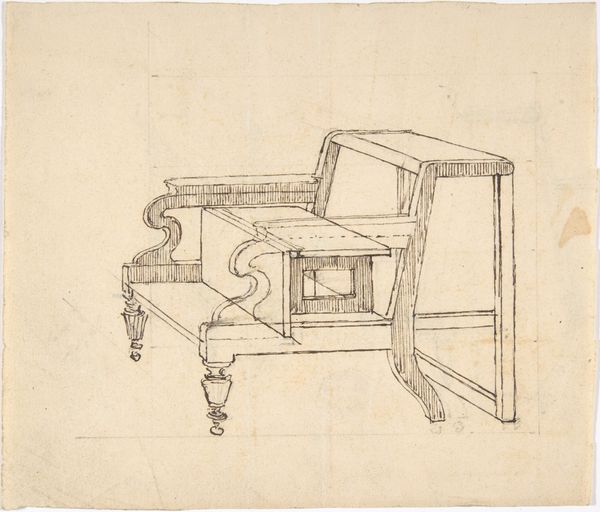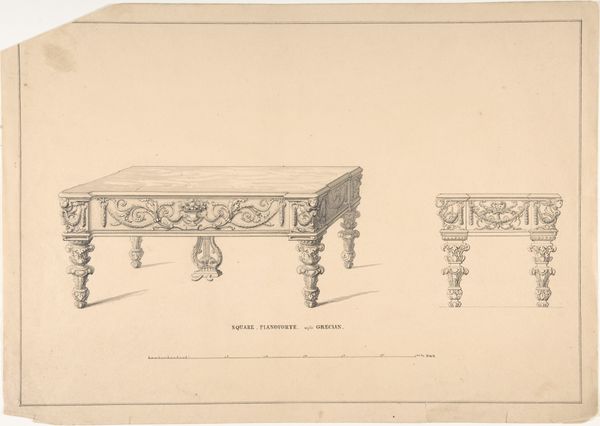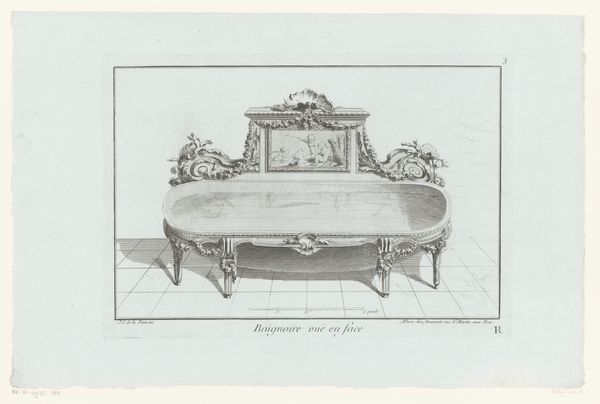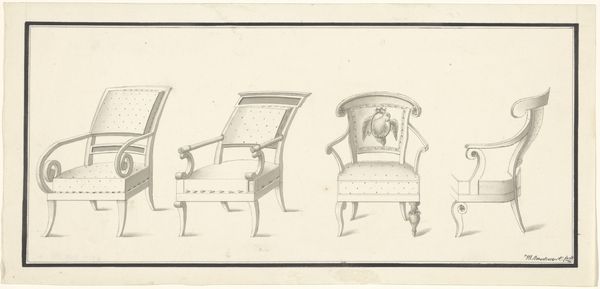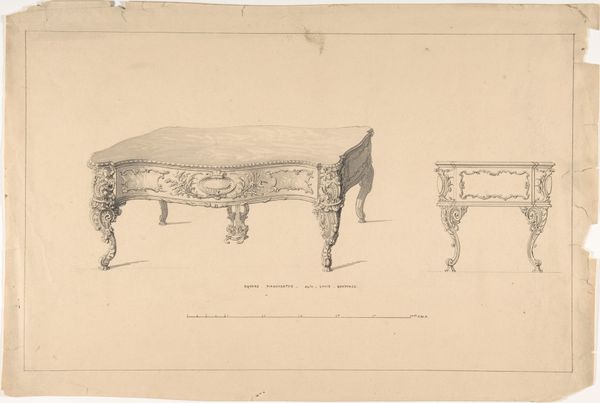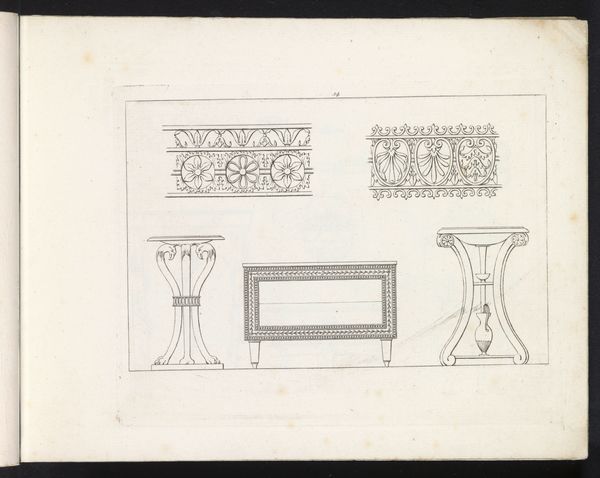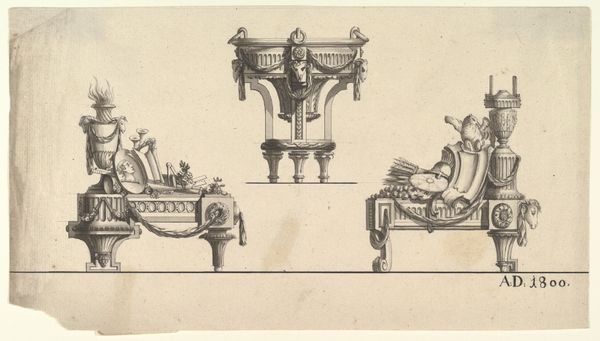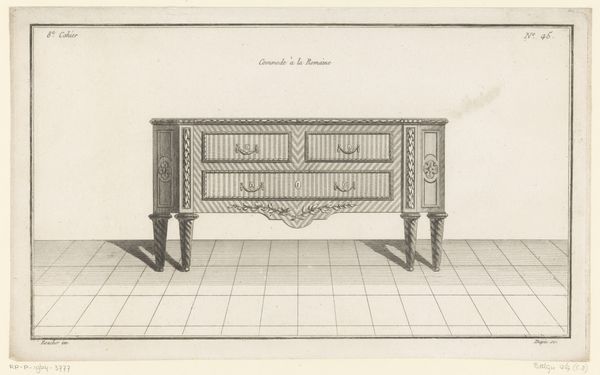
drawing, print, ink, pen, engraving
#
drawing
#
baroque
# print
#
form
#
ink
#
pen-ink sketch
#
line
#
pen work
#
pen
#
engraving
Dimensions: height 121 mm, width 189 mm
Copyright: Rijks Museum: Open Domain
Curator: Look at this intriguing print, "Tafel en stoel," attributed to Johannes Indau and created before 1685. What captures your attention first? Editor: That's baroque alright! All those flourishes, so deliberate. But the way the artist captures texture just with lines… there's something delicate about the sheer volume of detail. Curator: Indeed. Let’s consider the formal properties. Notice the meticulous use of line—varied weights and densities construct form, volume, and texture. Consider also the structured approach, giving precise visual rendering of Baroque furnishings. Editor: Absolutely, it is about forms but for me, that zig-zag pattern on the chair whispers unease. Makes you think how uncomfortable that chair is. Who actually sat on those thrones, I mean, practically? What do you make of it being a drawing? Curator: Its function within Baroque artistic practices. Many engravings such as this were design samples created to guide artisans in decorative programs for interior decoration of that time. Look at how this print exemplifies linearity and a sense of design for a functional object. Editor: You're right; that linearity is key! It almost feels like the skeleton of a room waiting to be built around these very grand items. Still, the perspective’s slightly off. Almost dreamlike, like something remembered rather than observed. I wonder who would've acquired this design? What home would that chair go in? Curator: Well, a patron of considerable wealth no doubt! The opulence presented here caters to tastes of upper-class citizens who enjoyed all the pleasures of materiality and displayed social distinction. Let’s not lose sight of what’s communicated—Baroque grandeur via line, shape, and compositional elements. Editor: True, the craftsmanship oozes through, doesn't it? But it makes you think beyond class too; to who would live in this type of ornamentation, what those rooms smelled like. An attempt to trap something essential, fleeting even in permanence. This has been quite the chat, diving so deep in ink. Curator: It's enriching to observe how diverse interpretative lenses may unfold subtle narratives beyond lines and shapes within Baroque expression, Thank you.
Comments
No comments
Be the first to comment and join the conversation on the ultimate creative platform.

